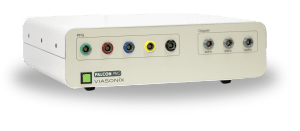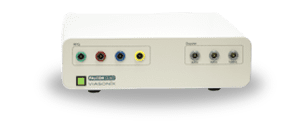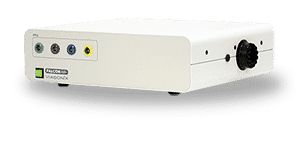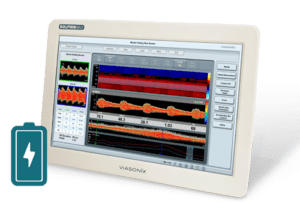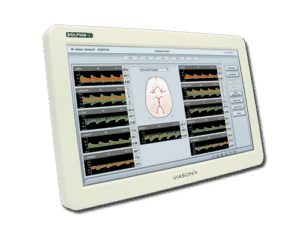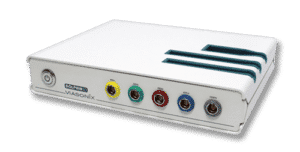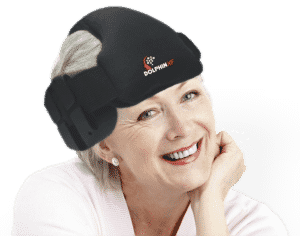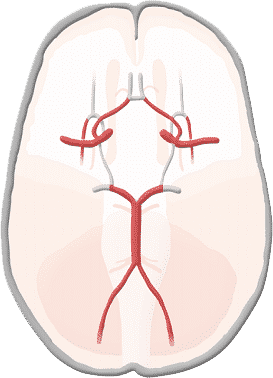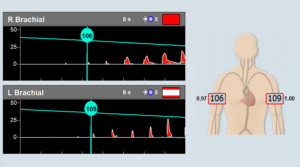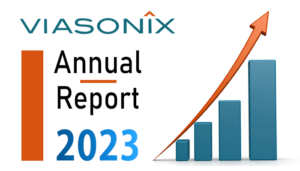History of TCD
This is the first part of the review. Stay tuned for the second part – we will examine modern advancements such as TCD robotics. But first, let’s discuss roughly the first 20 years of TCD equipment: how it started and the development for neuro-applications.
What is Transcranial Doppler (TCD)?
Transcranial Doppler (TCD) machine is a fundamental clinical diagnostic tool for a variety of clinical applications. TCD utilizes an ultrasound-based non-invasive method to measure blood flow velocities in the arteries of the brain. For about 4 decades, TCD machines have been widely used with numerous clinical applications:
- Stroke Management
- Vasospasm and SAH
- Arteriovenous Malformation
- Intracranial Stenosis
- Collateral Capacity
- VMR / Autoregulation
- Breath Holding Test
- Patent Foramen Ovale (PFO)
- Sickle Cell Disease
- Brain Death Diagnosis
- Long Term Monitoring
- Emboli Detection
- Endarterectomy
- Evaluation of ICP changes
- Intraoperative Measurements
- Most recently, COVID-19 following articles that found a link between the coronavirus and a high-risk factor for stroke and neurological deficits.
Meet the most advanced TCD system in the market
The Discovery of TCD as a New Technology
The initial discovery of TCD is attributed to Dr. Rune Aaslid. In the early 1980s, he found that the use of a pulse-wave ultrasound system can penetrate the skull and measure blood flow velocities in the cerebral circulation. Since this discovery was made, significant technological advancements have been made with Transcranial Doppler (TCD) devices.
The discovery by Dr. Aaslid led to the establishment by Alec Eden of the first commercial TCD company, EME (Eden Medical Electronics), out of Uberlingen, Germany. The TCD device of EME, TC2-64, became the spearhead that initiated the widespread clinical and technological research that ignited the TCD market.
First Analog TCD Devices
The first TCD devices relied on the existing computing technologies and, therefore, were quite simple and based on analog processing methods. Contrary to modern TCD machines, the older models were single gate TCD products with 2 MHz probes capable of displaying spectral waveform.
As increasingly more neurologists and neuro-vascular surgeons around the world became familiar and experienced with TCD examinations, the widespread clinical use of TCD gained international popularity. In parallel, various clinical applications of TCD emerged, such as long-term monitoring in the OR and specific testing such as CO2 reactivity or Vasomotor Reactivity. In addition, the TCD community founded dedicated guidelines, consensus committees, and international meetings such as the European Society of Neurosonology (ESNCH).
TCD Becomes an Important Clinical Diagnosis Tool
Several other TCD companies were founded in the 1990s. This was a direct response to the growing international interest in exploring blood flow velocities in the arteries that comprise the Circle of Willis of the brain. Among the new TCD companies were Rimed™ (Israel) with its Trans-link™ TCD product, which was later replaced by the Rimed™ Intraview™ TCD model, Multigon Industries (USA) with its lunchbox design of TCD systems such as the Neurovision™ TCD, and the Transpect transcranial doppler system from Medasonics (USA).
DWL™ (Germany) was founded in the early 1990s when Dieter Denner, a leading engineer with EME, left that company and co-founded DWL™. DWL™ became particularly active in designing different TCD standalone models of DWL™ Multi-Dop™ TCD product family, such as the Multi-Dop S™, Multi-Dop X™, Multi-Dop P™, Multi-Dop L™, and Multi-Dop T™. As a side note, DMS out of France was another European company that was involved in the TCD market.
The Emergence of Newer TCD Devices
An important American company that emerged in the 1990s, which had a lasting impact on the commercial TCD market, was Nicolet (USA). Nicolet acquired EME in 1992, and its main TCD product became the Nicolet Pioneer Transcranial Doppler system. Nicolet later acquired also SciMed (Bristol, UK), which was led by Bob Skidmore, and developed the Nicolet Companion TCD device.
In Seattle, Dr. Merrill Spencer co-founded in the 1990s yet another TCD company, Spencer Technologies™. We will discuss this in part 2 of this review, so please stay tuned.
For more information, please leave us a message.

